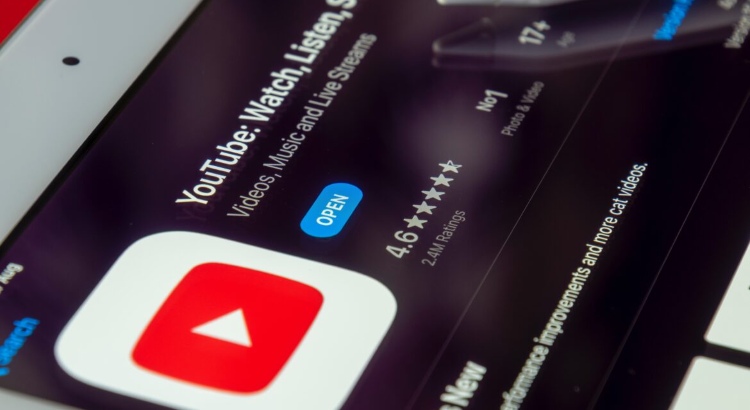Vimeo vs. YouTube: Which Video Hosting Platform Is Best for You?
According to a 2021 report from Zenith, the average internet user spends about 100 minutes daily watching online videos. For businesses wanting to grow online, investing in video marketing is a smart move. But making great videos is just one step—the platform you choose matters too.
What Are YouTube and Vimeo?
YouTube and Vimeo are popular platforms for hosting and sharing videos. Both allow users to upload, watch, and interact with video content from anywhere with an internet connection. Still, as you look deeper into each service, you’ll notice they’re not the same.
- YouTube: Owned by Google, known for its large audience and wide variety of video types.
- Vimeo: Popular among professionals for high-quality video hosting and creative communities.
Pricing and Subscription Options
Vimeo Pricing
- Plus: $7/month—5GB weekly uploads, 250GB yearly storage
- Pro: $20/month—20GB weekly uploads, 1TB yearly storage
- Business: $50/month—5TB total storage, no weekly limit
- Premium: $75/month—7TB total storage, unlimited live streaming
Higher plans offer bonus tools like analytics, lead generation, and webinar support.
YouTube Pricing
- Basic: Free for uploading and viewing (ad-supported)
- Premium: $11.99/month (single), $17.99/month (family), $6.99/month (student)—ad-free viewing and background play
YouTube makes money from ads and shares revenue with eligible creators.
Community Size and Reach
- As of 2021, YouTube reached about 2.24 billion users worldwide (Statista).
- In 2019, 79% of internet users said they had YouTube accounts (Datareportal, 2019).
- Vimeo had 1.5 million paying subscribers in early 2021 (Statista).
YouTube’s audience is much larger, making it ideal if you want high exposure. Vimeo’s smaller, creative-focused community can be better for targeted, high-quality work.
How Do They Make Money?
- Vimeo: Earns mostly from paid memberships; ad-free environment.
- YouTube: Makes money through ads; shares around 55% of ad revenue with creators. Successful creators need many views to earn significant income.
Privacy Controls
- YouTube:
- Public—anyone can watch
- Unlisted—only viewers with the link
- Private—only specific users
- Vimeo:
- Anyone—public videos
- Only me—private storage
- Only people I follow/choose—restricted to selected users
- Password-protected or private links (paid plans)—extra security for sharing with teams or clients
Types of Content
- YouTube: Hosts all kinds of content—vlogs, tutorials, music videos, movie trailers, and more.
- Vimeo: Focuses on creative, professional projects—films, documentaries, and high-quality business videos.
Famous YouTubers, like Justin Bieber and Michelle Phan, started on YouTube, highlighting its huge influence on creators worldwide.
Analytics and Insights
- YouTube: Offers advanced analytics—viewer age, gender, retention rates, revenue sources, shares, and traffic.
- Vimeo: Premium plans show video likes, impressions, playback data, and user demographics. You can export custom reports.
Both platforms give useful metrics, but YouTube offers wider insights because of its bigger audience.
Captioning and Accessibility
Both Vimeo and YouTube let users add captions and subtitles to videos, helping those who are deaf or hard of hearing. Accurate captions also boost SEO and audience reach. Services like GoTranscript support YouTube video transcription, closed captions, and translation for global accessibility.
Video Editing Features
- Vimeo: Custom templates, editing tools, control over fonts, layouts, and colors for polished results.
- YouTube: YouTube Studio provides basic editing like trimming, adding audio tracks, and tagging.
Both platforms make it simple to enhance your videos before publishing.
Technical Differences
- Vimeo: Maintains high video quality—even after embedding; little compression; strong profile customization options.
- YouTube: Compresses videos to save on data, which may reduce visual quality. Embedding options are less customizable. Recommended videos can distract viewers from your content.
Vimeo vs. YouTube: Making the Right Choice
- YouTube: Best for creators seeking huge audiences, easy sharing, and diverse content options.
- Vimeo: A great fit for professionals, brands, or filmmakers who want greater control, high quality, and a focused audience.
If you want to control who sees your videos and present your work in the best possible quality, Vimeo is ideal—especially if you have a budget. For mass exposure and easy content sharing, YouTube is unmatched.
Enhance Your Videos With GoTranscript
Whether you choose YouTube or Vimeo, making your videos accessible and discoverable is key. Accurate transcripts, reliable captioning, and professional subtitling help broaden your audience and improve engagement. GoTranscript provides expert transcription services, translation solutions, and competitive pricing to support your video strategy. Order transcription or captions online to maximize the impact of every video you share.



















 Verified Order
Verified Order